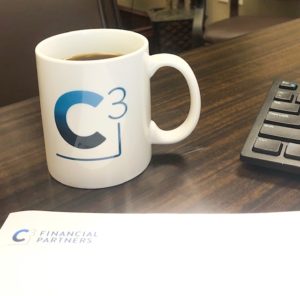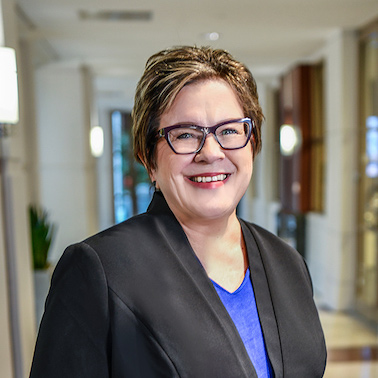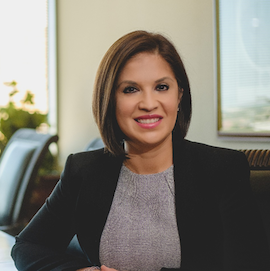
We were honored to host our third webinar in our “Coffee with C3” series on July 16, 2020, titled “The Known/Unknown Value of Life Insurance.” Partner, Celeste C. Moya, led the discussion and was joined by Managing Partner and Founder, Todd S. Healy, and our Senior Partner, Carolyn J. Smith. We discussed life settlements with our attendees and shared timely information about this financial tool that is frequently overlooked and commonly misunderstood.
Life insurance needs may change over time. In some instances, a source of current liquidity can be more financially beneficial to a family than a future death benefit. Our C3 team discussed the life settlement market and how it can be a valuable option in our current economic environment.
THE WHY
In the United States, the number of individuals aged 65 and older is expected to double in 10 years to nearly 71 million. That is roughly one in every five people. By extension, over 10,000 people per day will require guidance from advisors, like those at C3, to fund retirement and healthcare needs.
Most policy owners believe there are only two valid options with life insurance policies when their situation or objectives change:
- let the policy lapse, or
- if it is a policy that builds cash value, surrender the policy, and take the cash.
Studies show that Americans aged 65 years and older actually forfeit over $140 billion dollars of life insurance coverage every year by lapsing or surrendering life insurance policies. That dollar value is what we call the “known” value of the life insurance contract. What is often overlooked is how to determine the “unknown” value of the contract.
The “secondary market,” also known as the life settlement market, provides a way to see if the policy is worth more than the cash value; certain term policies can be sold within this market as well. However, many policyholders are unaware of this alternative option.
A recent survey showed over half of all seniors allowed their life insurance policies to lapse. In fact, four out of five were not even aware of the alternative options. Further, nine out of ten seniors who lapsed a life insurance policy said they would have considered a life settlement had they been aware of the possibility.
Education is, therefore, critical to equip individuals with the knowledge to manage their life insurance policies without forfeiting billions of dollars in coverage.
TODD HEALY’S LIFE SETTLEMENT EXAMPLES
In business situations, life insurance is often overlooked because it may not show up on the balance sheet. For instance, fifteen years ago, C3 did our first life settlement transaction. There was a substantial amount of life insurance and had a term policy that was expiring. The client did not want to keep the term policy or exercise the option to exchange it for a permanent contract. When we decided to go to the secondary market, we were able to secure $90,000 for a $1 million term policy. With this client, the “known” value was $0, but the “unknown” value, that was realized, was $90,000.
Another time, a banker referred me to a business client that was in a difficult financial situation. When the client purchased their business, they also purchased the life insurance policies the business owned on the prior owners. Years later, at a time when the company was in need of cash, the only real asset they had were these policies on the prior owners. Settling those policies provided this business with the unknown value in cash and sustained its operations.
A couple of years ago, an advisor called me to inquire about selling a client’s policy. The client was 92 and the face amount was $5 million. We typically tell clients and advisors that if a third party is interested in buying a policy, the asset is valuable enough for the insured, or the owner, to keep. In this instance, it was an emotional issue, and the client was not going to pay more premiums. Even though the policy cash value was less than $18,000, we were able to secure well over $1 million for the policy.
More recently, C3 had a client in the oil business in South Texas. The client had purchased several policies from us over the years and was in very poor health. Unfortunately, with the oil and gas business being affected so much by the economic downturn, they were unable to pay the premiums. By selling one of the smaller policies, and cashing in on the unknown value, we created several hundred thousand dollars of cash that the client was able to use to pay the premiums on the larger policies.
CAROLYN SMITH’S LIFE SETTLEMENT EXAMPLES
Estate plans that include a wealth holder making financial gifts to provide funds to a trust to pay premiums on a life insurance policy are becoming more common. Surprisingly, the insured party is sometimes not the wealth holder. The question that arises in these situations is: What happens if the wealth holder making the gifts to the Irrevocable Life Insurance Trust (ILIT) dies before the insured? Is the policy self-sustaining? If not, are there alternative/new sources of funding for the ILIT?
Most of the time, the trustee is a family member or friend, called an “accommodating” trustee. Like a corporate trustee, they have a continuing fiduciary responsibility to optimize the value of the trust assets for the beneficiaries. Advisors are especially valuable in these situations as they can alert the trustee to the possibility of the “unknown” value for the life insurance contract.
Another example comes from C3’s work with charities. If a charity owns an underperforming policy that may no longer be affordable, investigating a value on the secondary market may provide a source of money to fund the current needs/goals of the charity.
KEY TAKEAWAY
The examples Todd and Carolyn shared during the Coffee with C3 webinar are representative of the types of cases we typically see in this market. Circumstances changing in business and/or estate value, policy, performance, or source of premium funding may create a need to research the “unknown” value via a life settlement.
COVID-19 IMPACT
With all that is going on in our world, some individuals may begin finding themselves in a situation where they either can no longer afford to pay the premiums on their existing life insurance policies or need cash to pay for other essential needs, such as medical or custodial care.
Conditions that overnight, due to COVID, may now be chronic, and the liquidity need is today. Given that the majority of policyholders do not know a life settlement is an option, you, as their trusted advisor, can help them uncover an unknown source of funds by making your client aware of life settlement options.
Therefore, rather than watching your client merely surrender their life insurance policy back to the insurance company or letting the policy lapse out of conveniences, you can help them to avoid missing out on an opportunity which may make a huge impact in their lives.
WHO QUALIFIES PRE-PANDEMIC AND POST-PANDEMIC?
There are a number of general characteristics that outline who qualifies for these types of settlements as it relates to the hardships of the current global pandemic, such as those aged 70 and older who have had some change in health since the original policy was issued or younger individuals living with a serious chronic illness.
Second-to-die policies with one insured still living may also have options available. Most often, buyers are interested in policies with face amounts of $500,000 or greater. Longevity Risk is what buyers are evaluating compared to future premiums.
OVERVIEW OF LIFE SETTLEMENT MARKET AND OTHER KEY POINTS
To some, selling an insurance contract may come as a surprise. However, a little history can be helpful in clarifying the value of such a sale. In 1911, the U.S. Supreme Court case, Grisby v. Russell, ruled that a life insurance policy possesses all the ordinary characteristics of a property, meaning it was an asset that the policy owner could transfer without limitations. For years, this ruling has allowed advisors to use the right to transfer policies to accomplish business, estate planning and/or charitable giving goals.
Today, Texas, like many states, has special licensing requirements for the parties involved in a life settlement transaction. Buyers on policies are some of the biggest institutional investors, such as pension funds, municipalities, universities, etc. A large, diversified portfolio of policies serves as an alternative non-correlated asset class. This continues to provide a reliable double-digit rate of return.
Like other asset sales, the life settlement industry has a buy-side and a sell-side. On the buy-side, a life settlement provider is focused on getting the best deal for their customer. It is often these providers that you see/hear advertising on television and radio. The licensed broker acts as a fiduciary to the policy owner and facilities the negotiations to create competition among the buyers. It is this competition that uncovers the real “fair market value” or “unknown” value of the policy, and it is the process we use to work with a policy owner.
It is always important to ask questions to clarify who you are working with, whether it is a broker with fiduciary obligations or a life settlement provider representing the buyer and the involvement of the insured.
QUESTION AND ANSWER
Question: Are medical exams necessary?
Answer: The buyers will be interested in the medical history of the insured, but there are no physical exams involved. On the other hand, authorization is necessary. Obtaining medical information on the insured and longevity is key to buyers.
Question: What about income taxes on the sale of policies?
Answer: Policy owners also need to be aware that there are income tax and reporting rules for sales of life insurance contracts that should always be reviewed with their advisor. The 2017 Tax Act included a favorable retroactive change for calculating the tax basis in a policy that may be of a benefit for reviewing reporting of prior sales.
SUMMARY
We hope that this installment of Coffee with C3 has brought you new information about life insurance and life settlements. You never know when your clients may need to uncover the value of their unknown.
In closing, with all the uncertainty in the world we share a phrase that Carolyn recently heard:
“Remember we are one day closer to a solution to our current situation.”
As we face the uncertainty of our current day and time, we ask that you stay healthy and stay safe. We look forward to collaborating with you.


Interested in the next Coffee with C3? Contact Rebecca Bates.
 ™
™




